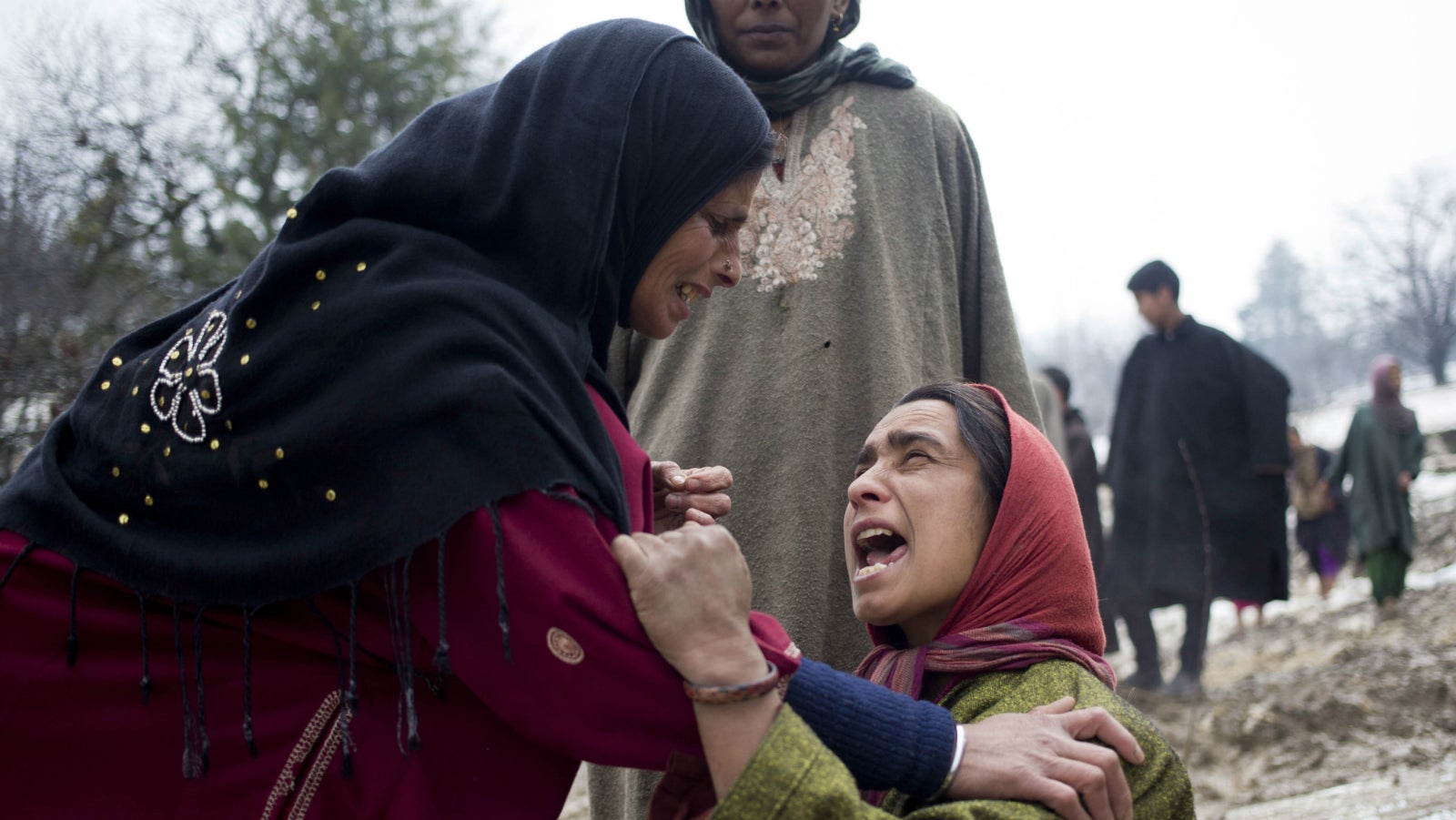Kashmir is once again unprepared for floods—because politics got in the way of rebuilding
SRINAGAR—It was around 10 pm on March 29.


SRINAGAR—It was around 10 pm on March 29.
Mohammad Iqbal, a visibly frightened 30-year-old corporate official, was shifting household goods from the ground to the second floor of his three-storey house. Iqbal lives with his parents in a posh colony in Srinagar’s Rajbagh area.
“I won’t take any chance this time around. The water level is rising, and the government is asking us not to panic,” Iqbal said when advised to wait for a formal government announcement of a flood alert in the nearby Jhelum River.
Around midnight, the Jammu and Kashmir government announced that the river was flowing above danger marks—both in Srinagar and in south Kashmir’s Sangam area—and that residents should shift children and elderly to safer places.
“This is so ironic. During the day, every minister and administrative official issued statements that there was no need to panic. And at midnight, they came up with a flood threat announcement. Where will the people go now?” Iqbal told Quartz on phone after he reached his maternal uncle’s residence at Soura, in Srinagar.
Reportedly, several other residents of low-lying, flood-prone areas, including Shivpora, Jawahar Nagar, Bemina, Lasjan, Mahjoor Nagar, Natipora, Padshahi Bagh, Indra Nagar, Panthachowk, Batwara and Athwajan areas of Srinagar, have shifted goods to upper storeys. And many of them said they will move to safer places.
People like Iqbal have a reason to panic. In September last year, when the devastating floods hit the state, he, like many others, waited for an official announcement. The delay in issuing a flood alert resulted in a catastrophe.
More than 270 people died and property worth crores of rupees was damaged across the state, as gushing Jhelum water breached its embankments and submerged most parts of the Valley.
Iqbal, along with his mother and hundreds of neighbours, remained trapped for almost a week on the top floors of their houses.
Flooding, again
Flood threat—once again—is looming large over Kashmir.
With incessant rains for the last three days, at 12 pm on Monday (March 30), the water level of Jhelum crossed the danger marks of 18 feet and 22 feet at Ram Munshibagh and Sangam, respectively.
Sensing a flood eventuality, the government over the last two days shifted nearly 400 families from different parts of the Valley to safer places.
Meanwhile, the rain has begun to wreak havoc at many places. Six persons died after two residential houses collapsed due to land sinking in central Kashmir’s Budgam district on Monday morning. “Six bodies have been extricated from under the debris. So far the number of missing persons is unknown,” a police spokesman said.
Since Sunday, 44 structures, including 18 residential houses, were reportedly damaged due to landslides. Eight of these were in Chontinar village of Budgam district alone.
“People have a reason to panic,” Shakil Ramshoo, head of earth sciences department at the University of Kashmir, said.
“It is not the amount of rainfall that will determine if Kashmir will be flooded again or not. It is the embankments and the flood control infrastructure, dilapidated and weakened by the 2014 floods, that we need to worry about,” he added.
Ramshoo said that during last year’s flood in the region, 140,000 cusecs of water had gushed down the Jhelum River.
“Comparatively, the amount of water is far too less to cause a flood, but the question is can the weak embankments survive the river flow?”
Experts fear that if the government doesn’t take immediate steps to overhaul the flood control mechanism, Kashmir will witness frequent floods in the coming years. The unabated encroachment of the tributaries and flood channels, and a negligible effort to de-silt the river basin, are pitched as major reasons that led to the overflow of water in 2014.
“To avoid floods in Kashmir, the government has to work on a major project that can take up to a decade to become a reality,” Ramshoo added.
He said that history and geological studies reveal that after every major flood in the past, Kashmir has witnessed a minor flood. “After last year’s flood, the government should have prioritised an upgraded flood-control infrastructure. Instead, it spent much of its time in holding elections and government formation.”
Not doing enough
On March 26, Sonum Lotus, director of the meteorological office, had warned the state government that heavy rains in the Valley could cause floods. The government did not pay heed until three days later—on March 29.
Though the water level in Jhelum has now receded below the danger mark, heavy rain is expected from April 1 to April 3, Lotus told Quartz.
The present Peoples Democratic Party and Bharatiya Janata Party coalition government is claiming that all the necessary steps have been taken to deal with the flood situation.
“Three control rooms have been established in north, south and central Kashmir, besides 400,000 sand bags have been made available to deal with any eventuality,” Naeem Akhtar, a minister in the coalition government, told members of the state legislative assembly, on Monday.
He said that the state government has already spoken to the National Disaster Response Force, and their team would soon be in the Valley. “Besides, boats have also been requisitioned and day and night vigil is being done on the bunds to monitor the situation,” an official handout quoting Akhtar said.
For the people of Kashmir, official announcements make little sense now. “Only a divine intervention can save us now,” a worried Iqbal said.